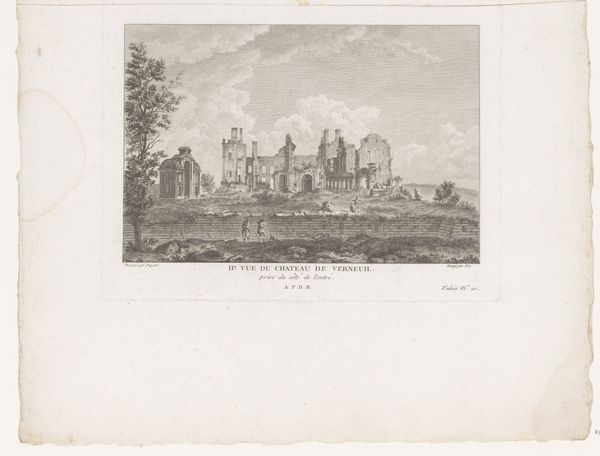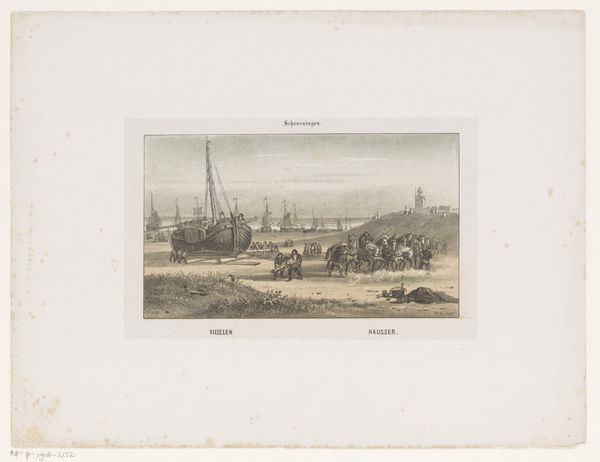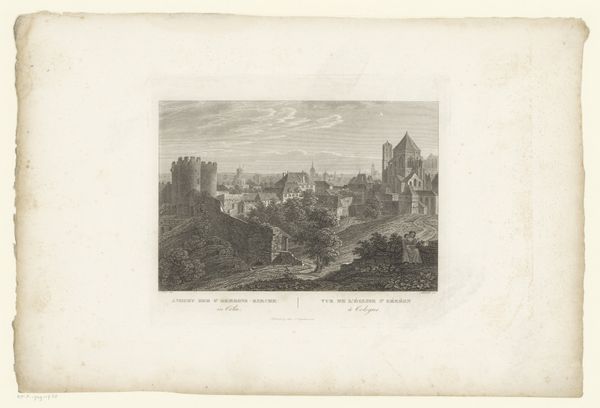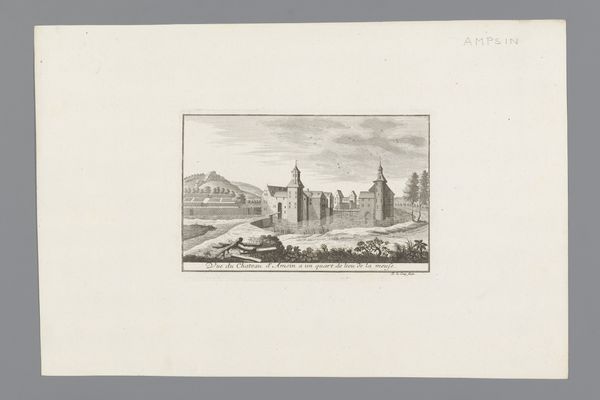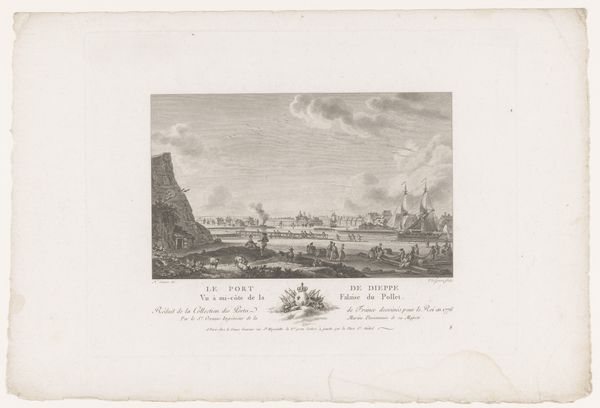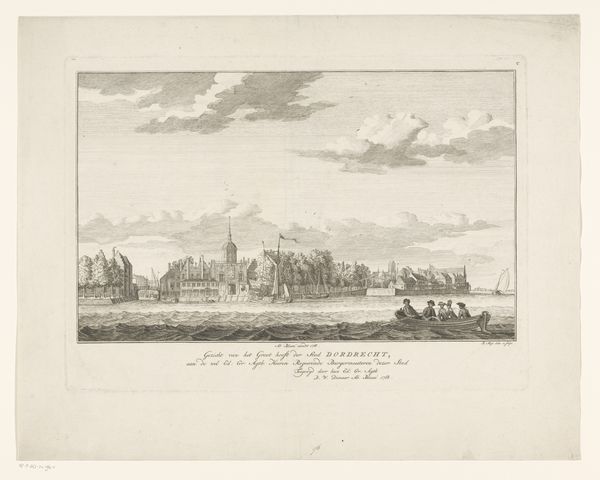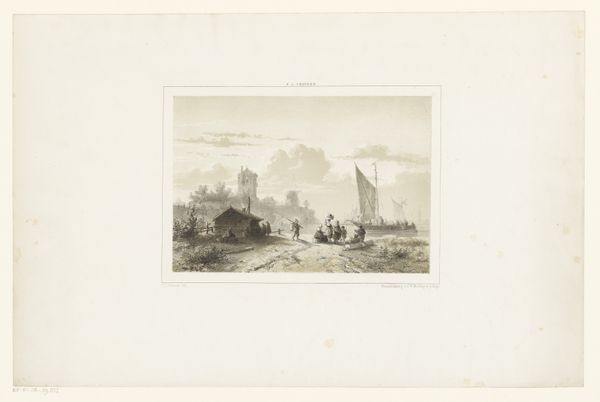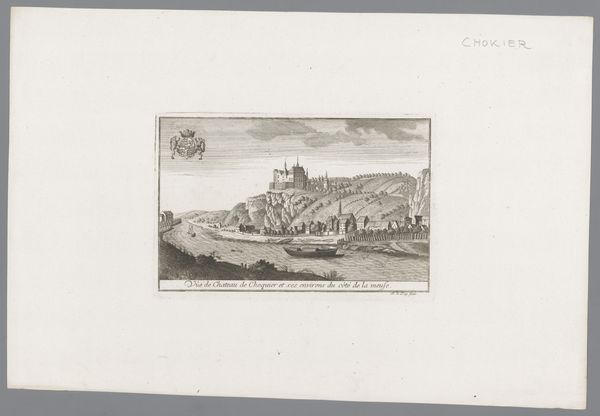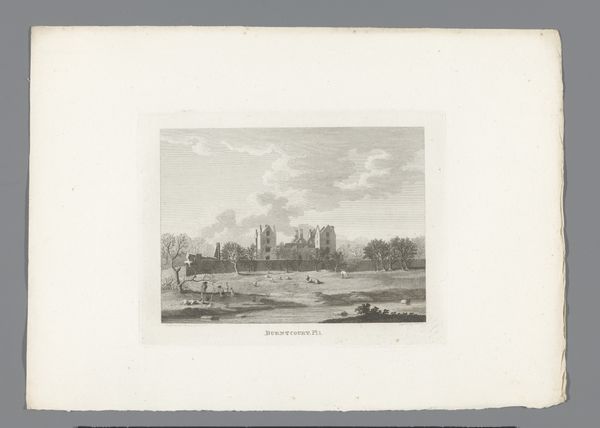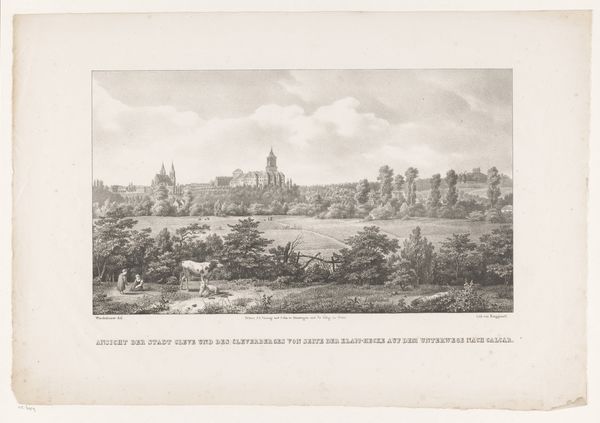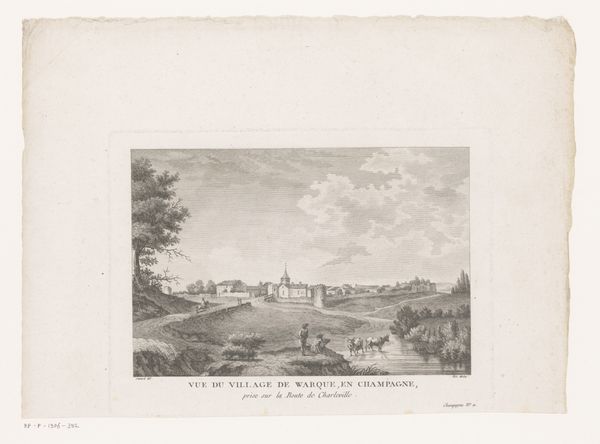
Gezicht op Verneuil-en-Halatte en het Château de Verneuil 1749 - 1817
0:00
0:00
francoisdenisnee
Rijksmuseum
Dimensions: height 181 mm, width 246 mm
Copyright: Rijks Museum: Open Domain
Curator: This print, "Gezicht op Verneuil-en-Halatte en het Château de Verneuil," by François Denis Née, invites us into a scene brimming with the intricacies of 18th-century French life, rendered in meticulous etching and engraving. It dates somewhere between 1749 and 1817. What impressions does it stir for you? Editor: You know, right off the bat, it gives me this sort of melancholic fairy tale vibe. The castle itself, perched up there, it's got this dignified, crumbling beauty. It looks like something out of a story that starts, "Long ago, in a kingdom far, far away..." but with maybe a slightly depressing ending? Curator: Indeed! The decaying architecture presents symbolic implications. Château de Verneuil was once the pinnacle of Renaissance architecture. Yet by the time Née created this print, it had already suffered through a history of neglect and partial demolition, carrying cultural memories about shifting dynastic powers, evolving aesthetics, and the inevitable decay of grand human endeavors. Editor: Absolutely, I can feel that heavy historical weight! But there's this really interesting counterpoint. The folks down below, they're going about their daily routines like none of that history even happened. What's your take on that juxtaposition? Curator: It emphasizes resilience and the eternal return of daily life amid grandiose narratives. The foreground focuses on human figures, a couple and possibly their child. Perhaps we see the continuous unfolding of personal stories set against the background of static grand historical events and their architectural symbolizations. Consider, for instance, the scale differential. Editor: Oh, good point. They almost don’t seem to belong in the same picture! Maybe that's the tension – it's not just history and the present, but the grand scale of powerful structures and tiny lives just trying to get by. Plus the muted palette adds this wonderful understated drama to everything. It whispers, rather than shouts. Curator: Precisely. Née's skillful layering of line and tone emphasizes ephemerality and endurance, drawing the eye both to the architectural detail and to the fleeting moments of the figures depicted, inviting contemplations on cycles and continuity. Editor: What a perfect blend of then and now, monumental and minute. Makes you think about all those layers under every little village. I will not look at another landscape the same.
Comments
No comments
Be the first to comment and join the conversation on the ultimate creative platform.
